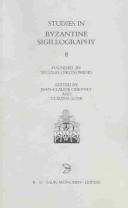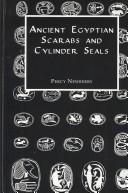| Listing 1 - 10 of 22 | << page >> |
Sort by
|
Book
ISBN: 1784915491 9781784915490 Year: 2017 Publisher: Oxford : Archaeopress,
Abstract | Keywords | Export | Availability | Bookmark
 Loading...
Loading...Choose an application
- Reference Manager
- EndNote
- RefWorks (Direct export to RefWorks)
This book is intended to be a repository of the salient information currently available on the identification of cloth seals, and a source of new material that extends our understanding of these important indicators of post medieval and early modern industry and trade.
Book
Year: 2018 Publisher: Wayne State University Press
Abstract | Keywords | Export | Availability | Bookmark
 Loading...
Loading...Choose an application
- Reference Manager
- EndNote
- RefWorks (Direct export to RefWorks)
Friedenberg's work provides the first comprehensive study of the use of seals by Jews from the 12th to the 16th century and their role in transforming Europe from a barter economy to a money economy. Structuring his analysis by geographic regions, Friedenberg examines the physical nature of the seals and discusses the symbols and legends they employ. He examines their relation to similar Christian seals, their legal validity and use, and their prevalence in certain areas at certain times. In all, 177 seals are catalogued. Where the impressions are appended to documents, the document is also reviewed. Whenever possible, the seals are illustrated, as are the most significant documents, along with other seals, medals, coins, letters and paintings which serve to illuminate the discussion of a seal. The result is the definitive catalog of all known Jewish seals of the period.
Seals (Numismatics) --- Jewish seals (Numismatics) --- Catalogs. --- History of art
Book
ISBN: 1782978186 1782978208 9781782978206 9781782978183 9781782978190 1782978194 1336208902 9781336208902 9781782978176 Year: 2015 Publisher: Oxford Havertown, PA
Abstract | Keywords | Export | Availability | Bookmark
 Loading...
Loading...Choose an application
- Reference Manager
- EndNote
- RefWorks (Direct export to RefWorks)
Seals and their Context in the Middle Ages offers an extensive overview of approaches to and the potential of sigillography, as well as introducing a wider readership to the range, interest and artistry of medieval seals. Seals were used throughout medieval society in a wide range of contexts: royal, governmental, ecclesiastical, legal, in trade and commerce and on an individual and personal level. The fourteen papers presented here, which originate from a conference held in Aberystwyth in April 2012, focus primarily on British material but there is also useful reference to continental Europe.
Seals (Numismatics) --- Sigillography --- Signets --- Sphragistics --- Diplomatics --- Glyptics --- Heraldry --- History --- Inscriptions --- Intaglios --- Numismatics --- Emblems, National --- Signatures (Writing)

ISBN: 3110960087 9783110960082 3598779208 9783598779206 Year: 2003 Publisher: München K.G. Saur
Abstract | Keywords | Export | Availability | Bookmark
 Loading...
Loading...Choose an application
- Reference Manager
- EndNote
- RefWorks (Direct export to RefWorks)
No detailed description available for "STUDIES BYZANTINE SIGILLOGRAPHY V.8 E-BOOK".
Seals (Numismatics) --- Sigillography --- Signets --- Sphragistics --- Diplomatics --- Glyptics --- Heraldry --- History --- Inscriptions --- Intaglios --- Numismatics --- Emblems, National --- Signatures (Writing)
Book
ISBN: 1842179187 9781842179185 Year: 2012 Publisher: Havertown Oxbow Books, Limited
Abstract | Keywords | Export | Availability | Bookmark
 Loading...
Loading...Choose an application
- Reference Manager
- EndNote
- RefWorks (Direct export to RefWorks)
For many decades in the 18th and 19th centuries, Russia was the world's greatest exporter of flax and hemp and Great Britain its major customer. Most studies of flax and hemp and their associated industries have hitherto concentrated on the economic and historical events surrounding the rise and fall of these industries in Britain. This book is based on a large body of new material consisting of lead-alloy seals that were attached to bundles of flax and hemp exported from Russia and aims chiefly to describe the different seals that were used and to explain the reasons why they were employed. It offers a short history of their use, a guide to their identification and a catalogue of items recovered in Britain, opening up a valuable new source of material for analysing a different aspect of the history of commercial relations between Russia and Britain and providing assistance for finders and museum curators in identifying and deciphering these objects correctly. The text guides the reader through the different types of seal so far recorded using illustrations, transliterations of the Cyrillic texts found on the seals and explanatory tables, as well as a comprehensive catalogue. Analysis is conducted of the information found in the seals. This information provides us with a picture of the manner in which the export of these products from Russia to Britain was handled and allows us to make comparisons over different periods of time and to analyse the different systems of quality control used. It also enables us to record the geographical distribution of Russian ports used for the export of flax and hemp to the UK, where the spread of their distribution tells us something of the redistribution of these imports and provides an understanding of the use to which their by-products were put as part of the agricultural practices of the 18th and 19th centuries.
Cloth seals (Numismatics) --- Flax industry --- Hemp industry --- Plant fiber industry --- Textile industry --- Bag seals (Numismatics) --- Bale seals --- Lead bag seals (Numismatics) --- Lead bale seals --- Lead cloth inspection seals --- Lead cloth seals (Numismatics) --- Seals (Numismatics) --- History. --- Russia --- Great Britain --- Russie --- Rossīi︠a︡ --- Rossīĭskai︠a︡ Imperīi︠a︡ --- Russia (Provisional government, 1917) --- Russia (Vremennoe pravitelʹstvo, 1917) --- Russland --- Ṛusastan --- Russia (Tymchasovyĭ uri︠a︡d, 1917) --- Russian Empire --- Rosja --- Russian S.F.S.R. --- Russia (Territory under White armies, 1918-1920) --- Commerce --- History
Book
ISBN: 1299316972 1589835573 9781589835573 9781299316973 9781589837904 1589837908 9781589835566 1589835565 Year: 2012 Publisher: Atlanta, Georgia
Abstract | Keywords | Export | Availability | Bookmark
 Loading...
Loading...Choose an application
- Reference Manager
- EndNote
- RefWorks (Direct export to RefWorks)
Inscriptions, Hebrew --- Seals (Numismatics) --- Jewish seals (Numismatics) --- Seals (Law) --- Sigillography --- Signets --- Sphragistics --- Diplomatics --- Glyptics --- Heraldry --- History --- Inscriptions --- Intaglios --- Numismatics --- Emblems, National --- Signatures (Writing) --- Hebrew inscriptions --- Bible --- Antiquities. --- Israel --- Palestine --- Biblia

ISBN: 0203040333 1283839385 1136202315 9781136202315 9780203040331 9781136202384 9781136202469 9780710309440 9781138963498 1136202382 Year: 2012 Publisher: Hoboken Taylor and Francis
Abstract | Keywords | Export | Availability | Bookmark
 Loading...
Loading...Choose an application
- Reference Manager
- EndNote
- RefWorks (Direct export to RefWorks)
The seals collected by Captain Timins of Cairo are here catalogued, reproduced and described by Percy Newberry to make an attractive and useful book. The original collector chose on the basis of historic, as well as artistic merit, to form his choice. The provenance of the seals is mostly from the Eastern Delta and Upper Egypt.
Scarabs --- Cylinder seals --- Cylindrical seals --- Roll seals --- Seals (Numismatics) --- Amulets, Egyptian --- Insect forms in art and archaeology --- Egypt --- Antiquities.
Book
ISBN: 9781783168750 9781783168712 1783168722 1783168714 1783168757 1783168730 9781783168729 9781783168736 Year: 2016 Publisher: Cardiff
Abstract | Keywords | Export | Availability | Bookmark
 Loading...
Loading...Choose an application
- Reference Manager
- EndNote
- RefWorks (Direct export to RefWorks)
Seals and Society arises from a major project investigating seals and their use in medieval Wales, the Welsh March and neighbouring counties in England. The first major study of seals in the context of one part of medieval Western European society, the volume also offers a new perspective on the history of medieval Wales and its periphery by addressing a variety of themes in terms of the insight that seals can offer the historian. Though the present study suggests important regional distinctions in the take-up of seals in medieval Wales, it is also clear that seal usage increased from the later twelfth century and spread widely in Welsh society, especially in those parts of Wales neighbouring England or where there had been an early English incursion. Through a series of chapters, the authors examine the ways in which seals can shed light on the legal, administrative, social and economic history of the period in Wales and its border region. Seals provide unique insights into the choices individuals, men and women, made in representing themselves to the wider world, and this issue is examined closely. Supported by almost 100 images gathered by the project team, the volume is of great interest to those working on seals, their motifs, their use and developments in their usage over the high and later Middle Ages.
Seals (Numismatics) --- History. --- Sigillography --- Signets --- Sphragistics --- Diplomatics --- Glyptics --- Heraldry --- History --- Inscriptions --- Intaglios --- Numismatics --- Emblems, National --- Signatures (Writing)
Book
ISBN: 9781438489735 9781438489742 1438489749 Year: 2022 Publisher: ALBANY STATE UNIV OF NEW YORK PR
Abstract | Keywords | Export | Availability | Bookmark
 Loading...
Loading...Choose an application
- Reference Manager
- EndNote
- RefWorks (Direct export to RefWorks)
In dialogue with Derrida, formulates a new philosophical problem - a complex aporia that underlines the topic of the handwritten as a sign of legal identification.
Derrida, Jacques --- Signatures (Writing) --- Signature (Law) --- Diplomatics --- Forgery --- Inscriptions --- Manuscripts --- Paleography --- Writing --- Autographs --- Seals (Numismatics) --- Law --- Philosophy.
Book
ISBN: 9994480804 2821872321 Year: 2016 Publisher: Addis-Abeba : Centre français des études éthiopiennes,
Abstract | Keywords | Export | Availability | Bookmark
 Loading...
Loading...Choose an application
- Reference Manager
- EndNote
- RefWorks (Direct export to RefWorks)
Les Empreintes du temps sont la première publication exhaustive d'une collection de sceaux éthiopiens encore inconnue il y a quatre ans. L'événement est une aubaine pour les amateurs de sigillographie comme pour les historiens de l'Éthiopie à l'époque de son entrée dans la modernité. Un signal fort fut donné à l'Occident par le roi des rois Téwodros II, qui, assiégé sur sa forteresse de Mäqdäla par le général Napier venu délivrer manu militari des prisonniers européens, préféra se donner la mort plutôt que de connaître le déshonneur de la défaite. C'était en 1868. La collection Boucoiran s'ouvre précisément sur le sceau de ce roi, puissant et courageux à l'image du lion qui fait une entrée durable dans la sigillographie éthiopienne. Téwodros acquit très tôt une stature de héros national. Dès sa disparition, une « élégie mélancolique » le célébrait en ces termes : Voyez donc comme meurt un véritable lion, Qui croit ignominieux de mourir de main d'homme. (Berhanou Abebe, Histoire de l'Ethiopie d'Axoum à la révolution, Maisonneuve & Larose, 1998 : 101). À partir de Menilek II, les sceaux célèbrent le roi des rois comme le Lion de Juda, réaffirmant ainsi le mythe, fondateur de la royauté éthiopienne, de la descendance salomonienne des souverains. La collection Boucoiran réunit, en exactement cent empreintes, les principaux personnages nobiliaires, militaires, civils et religieux qui animèrent la vie intérieure et internationale du pays entre 1860 et 1925, soit du règne de Téwodros à celui de la fille de Menilek II, Zäwditu, au cours de la régence du ras Täfäri, futur Haylä Sellasé. L'ouvrage répond à un triple objectif : l'identification des titulaires de ces sceaux comme contribution à leurs biographies, le décryptage et la traduction des exergues en caractères ge'ez, arabes, plus rarement romains, enfin une lecture et une interprétation ouvertes des motifs iconographiques. Les auteurs ont choisi de traiter ces empreintes comme des sources historiques originales.
Seals (Numismatics) --- Sigillography --- Signets --- Sphragistics --- Diplomatics --- Glyptics --- Heraldry --- History --- Inscriptions --- Intaglios --- Numismatics --- Emblems, National --- Signatures (Writing) --- monarchie --- histoire --- collections --- administration --- représentation du pouvoir --- sigillographie
| Listing 1 - 10 of 22 | << page >> |
Sort by
|

 Search
Search Feedback
Feedback About UniCat
About UniCat  Help
Help News
News